- Yokohama-shi Top Page
- Living and Procedures
- Community Development and Environment
- Transportation
- Traffic safety
- Traffic safety for children
- Child seats that protect children's safety
Here's the text.
Child seats that protect children's safety
Last Updated September 1, 2020
The child's body shape and the adult body shape are very different, and car seat belts made for adults are not enough to protect the child in the event of a traffic accident. Child seats are necessary to protect children from the impact of traffic accidents.
However, according to a nationwide survey of child seat usage conducted jointly by the National Police Agency and the Japan Automobile Federation (JAF) between June 1 and June 16, 2019, the overall usage rate for children under 6 years old is only 70.5%.
In addition, 47.6% of the attached child seats were properly installed, and 42.2% of the infants who used child seats were able to properly sit down.
Properly mounting child seats and sitting properly will lead to child safety.
Type of child seat
There are three types of child seats available for newborns and baby/infant (baby seats), for infants (child seats), and for schoolchild (junior seats). Make sure you choose the one that suits your child's physique.
Newborns and Infants (Baby Sheet)
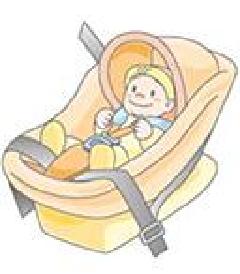
(From the Ministry of Land, Infrastructure, Transport and Tourism website)
Weight less than 10 kilograms
70 centimeters or less tall
Ages from 0 to 1 year old
Point
- The baby/infant, whose skeleton is undeveloped, is designed to be installed backwards so that it can be supported by the entire body from the head to the back. Don't install it positively.
- Since the passenger seat is generally equipped with airbags, it is extremely dangerous because the airbag can hit the back of the child seat when the airbag expands. (Excluding vehicles that do not have passenger seat airbags and have equipment that can stop the operation of the airbags.) Install them in the driver's seat or in the rear seat behind the passenger seat.
Infants (child seats)
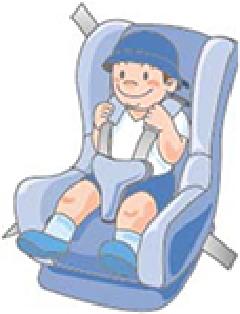
(From the Ministry of Land, Infrastructure, Transport and Tourism website)
9 to 18 kilograms of weight
Height 65 to 100 centimeters or less
Ages 1 to 4 years old
Point
- Use it when the infant's neck sits down and can sit on your own.
- Children's seats for infants should be installed positively.
schoolchild (Junior seat)
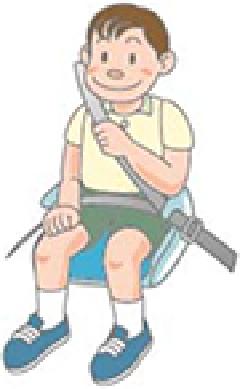
(From the Ministry of Land, Infrastructure, Transport and Tourism website)
Weight 15 to 36 kilograms
135 centimeters or less tall
Ages 4 to 10 years old
Point
- According to law, child seats are required to be used for infants under 6 years of age, but seat belts work effectively for people with a height of about 140 cm or more, so even if they are over 6 years old, Children should use junior seats.
- The standard for using a junior seat without a backrest is 22kg in weight and 125cm in height. If you do not meet the criteria, use a junior seat with a headrest or backrest.
Please select a safe child seat.
The current safety standard, ECE R44/04, came into effect on October 1, 2006, and was fully applied on July 1, 2012 after a preparation period.
Until June 2012, old-standard child seats could also be sold, and in addition to those approved in Japan, Western and American standards were also sold, but since July 2012, only those that have been approved under the new standards can now be sold.
A child seat that has cleared the standard is marked with the E mark as shown below.
In addition, the latest safety regulations R129 are currently adopted, and will be approved in accordance with R129 safety standards.
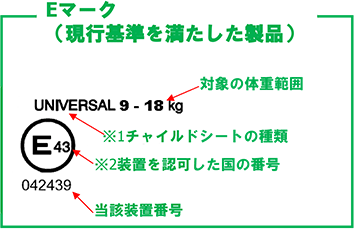
(From the Ministry of Land, Infrastructure, Transport and Tourism website)
There are no legal restrictions on child seats with old standards (self-marked) that you already have, but child seats that meet current standards will satisfy a higher safety performance rating.
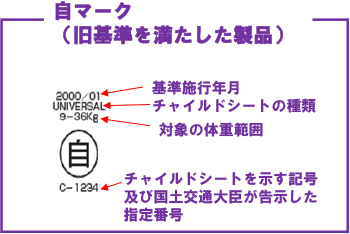
(From the Ministry of Land, Infrastructure, Transport and Tourism website)
Properly install child seats
There are two ways to fix the child seat: "ISO-FIX (isofix) fixation" and "Seatbelt fixation". In each case, read the instructions carefully and install them correctly.
In the past, most of them were seat belt-fixed, often used by incorrect installation, and the original safety performance could not be achieved. As a result, the ISO-FIX fixed type, which fixes the seat and child seat on the car side with common mounting equipment, is now available on the market.
New passenger cars (less than 10 passengers) that have been newly sold since July 2012 are equipped with common mounting equipment compatible with ISO-FIX child seats. (Some models are also equipped on passenger cars before July 2012.)
The ISO-FIX child seat is easy to install, so it is said that there are fewer errors when mounting compared to the type that is fixed to the seat using a seat belt of a car.
Notes
A child seat suitable for your car
Not all child seats can be attached to all cars. Check if it can be attached referring to the "Child Seat Compatibility Table by Model" issued by the manufacturer, etc., and select a child seat that suits your car.
A child seat can be installed in the rear seats as much as possible.
The passenger seat is generally equipped with airbags, and when activated, the impact is large and extremely dangerous. If you are forced to attach a child seat to the passenger seat, slide the seat back as much as possible to reduce the impact from the airbag.
※ As mentioned above, the baby seat for newborns and baby/infant, which must be installed backwards, must not be attached to the passenger seat.
Don't forget to adjust the shoulder belt
If you set up a child seat and let your child sit down, do not forget to adjust the shoulder belt. If the shoulder belt is loose, the child may get out of the child seat and the shoulder belt may hang on the neck and cause injury.
Also, if you are wearing a thick coat, etc. so that your body can adhere to your child seat, remove it.
Beware of burns
When parking in the scorching sun, the child seat body, buckle, and the metal fittings of the belt may be hot. If you want your child to sit down, touch each part to check.
Inquiries to this page
Road Policy Promotion Section, Road and Highway Bureau Road Policy Promotion Department
Telephone: 045-671-2323
Telephone: 045-671-2323
Fax: 045-550-4892
Email address: do-seisaku@city.yokohama.jp
Page ID: 730-612-344







